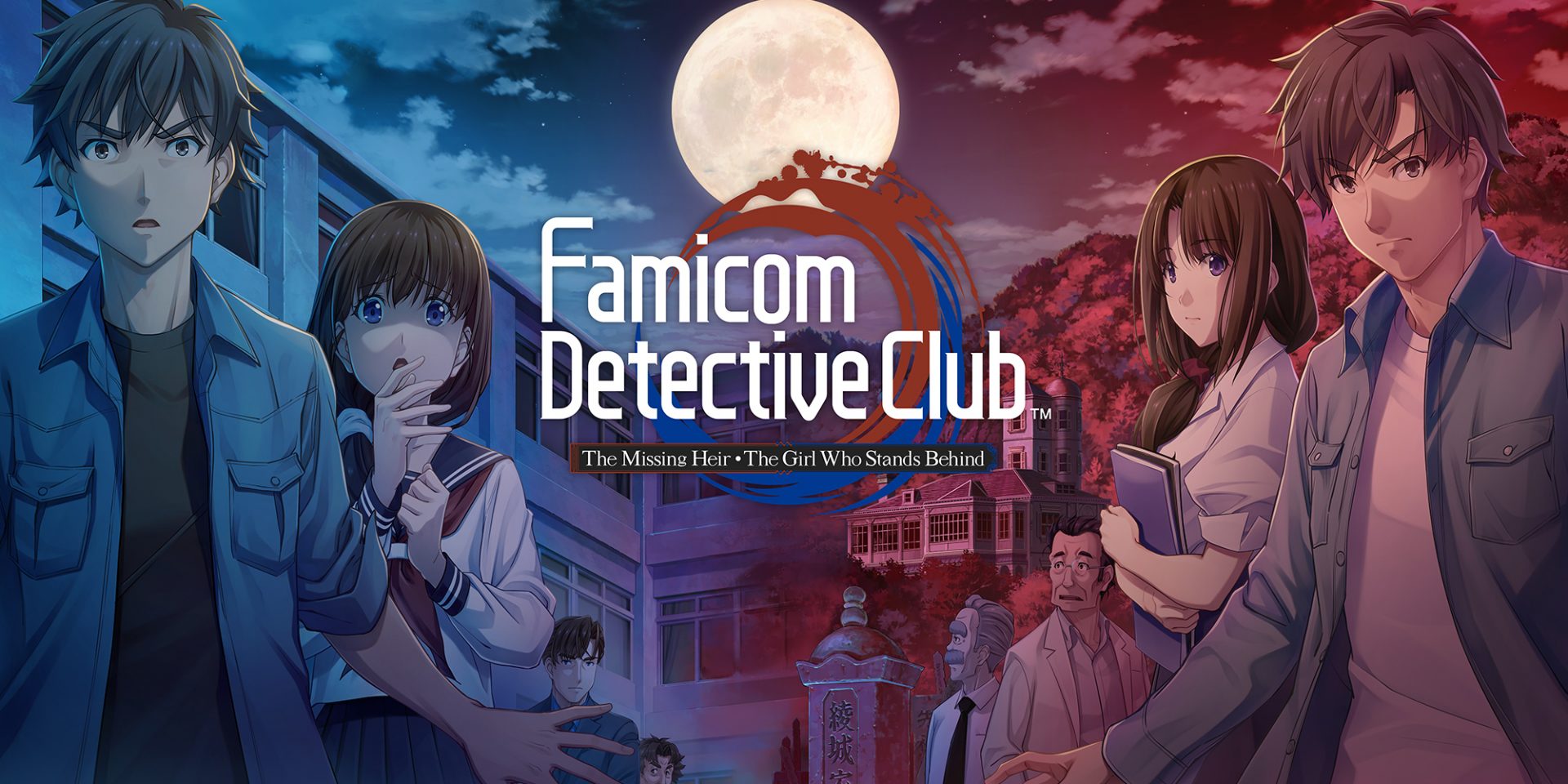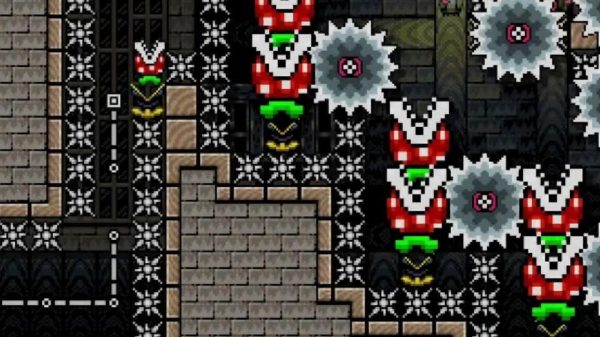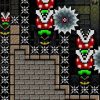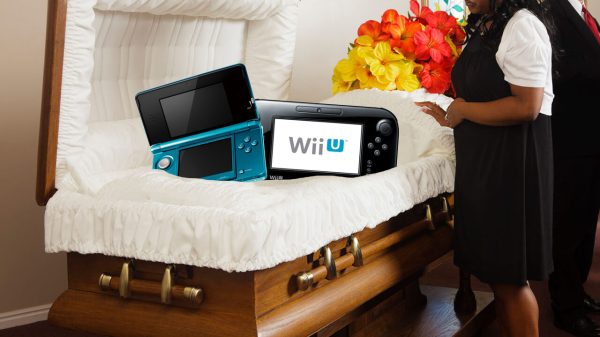The art of storytelling is not an easy thing to master. To not only come up with an interesting idea for a story but to be able to follow through and create an entertaining narrative that will keep people interested past the first paragraph is no easy task. The ‘visual novel’ game genre dates back to the early eighties and despite the now-primitive technology that these games were developed for, it gave players a new way to immerse themselves in a story by giving the player direct control over character dialogue choices.
Famicom Tantei Club: Kieta Kōkeisha (Famicom Detective Club: The Missing Heir) and Famicom Tantei Club Part II: Ushiro ni Tatsu Shōjo (Famicom Detective Club: The Girl Who Stands Behind) originally released in 1988 and 1989 respectively in Japan on the Family Computer Disk System. They have seen a few re-releases over the years on various systems but, again, only ever for the Japanese audience. Flash forward to now and Nintendo have enlisted the help of developer MAGES in order to completely rebuild the games for the Switch, creating a duo of stories that look to stand on their own even by modern day standards.

That Super Famicom to Nintendo Switch glow up
Despite ‘The Missing Heir’ having been released earlier, ‘The Girl Who Stands Behind’ is actually a prequel, and their title billing definitely suggests the best order in which to play them. FDC: The Missing Heir and FDC: The Girl Who Stands Behind both feature the same protagonist, who you’ll personally name (and the games will ask you if you want to carry over your protagonist’s name between titles which is a nice touch of continuity). In both games you’ll be trying to solve a mysterious death case, compiling as much information from a series of one-on-one conversations with people either directly involved with the deceased or just the general townsfolk you’ll come across.
This is where the visual novel gameplay comes into action. You have a menu on the left of the screen that shows what actions you can take, such as Talk, Look/Examine and Think. You’ll have to take into account the context of the conversation you are having with a character to ask the right questions, look at a certain part of the scene that you’re in or even interact with objects in order to move the story forward. Unfortunately this is where the gameplay begins to show its age. The barebones style of narrative gameplay here can get a bit stale after a few hours, especially when it’s not immediately clear how to ask the right questions about the right things in the right order to be prompted to progress the story forward. There were multiple times where I believed I had exhausted all of the questions/actions with a certain character, going through and selecting the same prompts to double check only to eventually figure out that I hadn’t clicked on a certain prompt the correct amount of times.
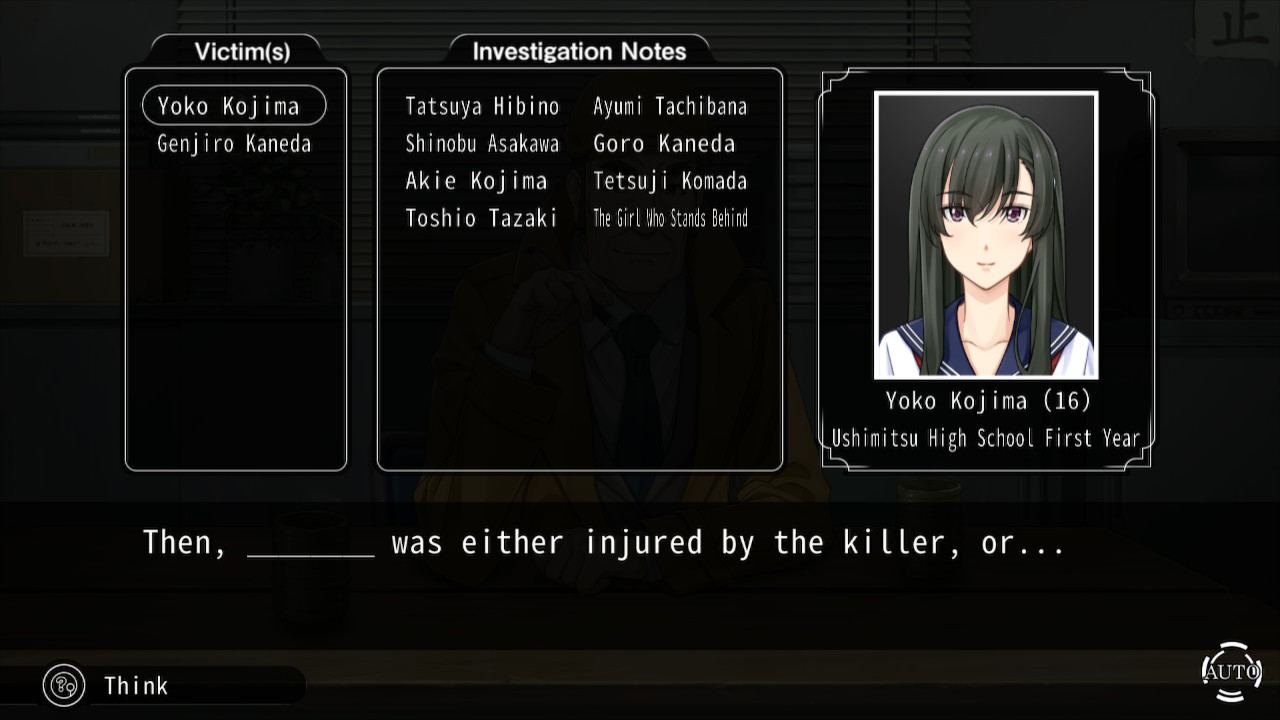
So many suspects, so little time
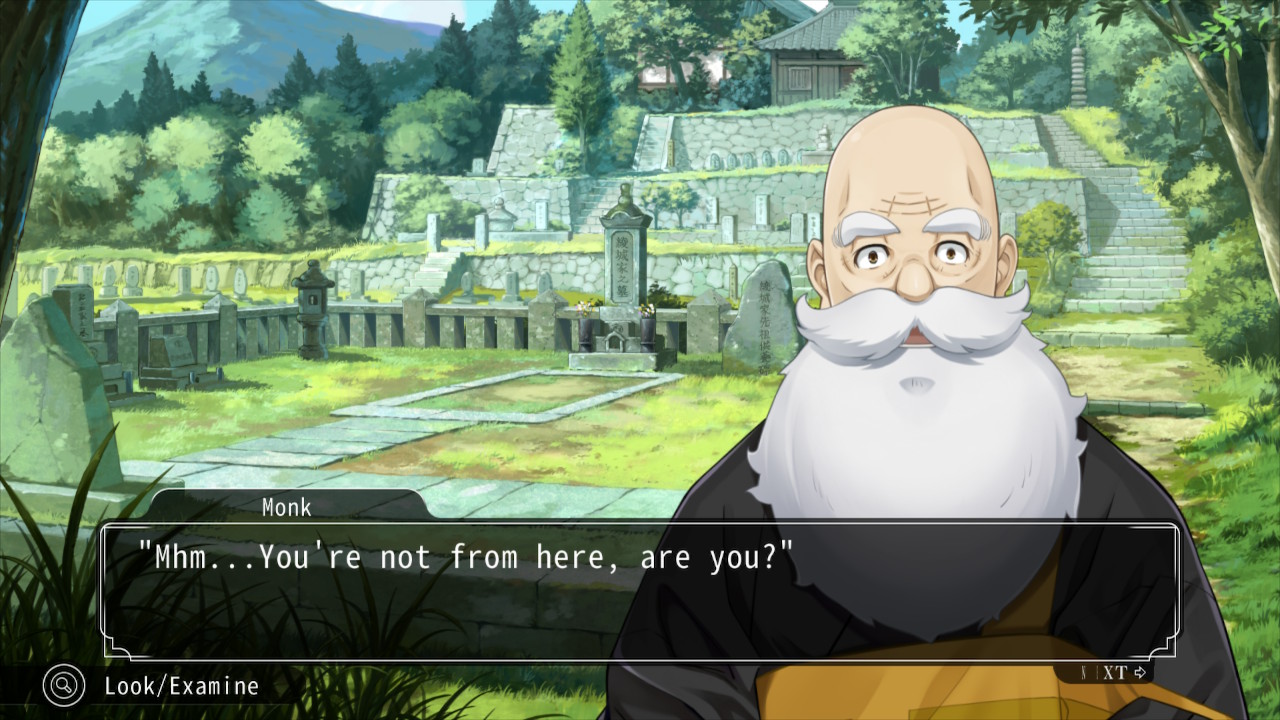
You’re awfully perceptive, Monk
‘The Missing Heir’ doesn’t really change the gameplay formula outside of a few examples closer to the end of the story. ‘The Girl Who Stands Behind’ does add a new gameplay feature which takes advantage of the in-game notepad, though. This feature was originally implemented in the Super Famicom remake of ‘The Girl Who Stands Behind’ back in 1998 and it keeps track of any important character information that you uncover during your investigation. This is by far one of the best gameplay features included in this remake. With twenty-plus interactable characters in each game, having a place to go and find that small piece of information that you gathered three hours ago that’ll help you draw the red string in-between two points on your imaginary investigation wall is relieving to say the least.
As mentioned above, this is a remake meaning the team over at MAGES have worked painstakingly to recreate each game’s characters and locations in line with a modern art style, and it’s hard to fault them on their work. Unlike some of their other productions such as Robotics;Notes DaSH and Psycho-Pass: Mandatory Happiness which had existing anime and/or manga for visual reference, Mages looks to have had full artistic liberty when it came to redrawing the characters in a more contemporary aesthetic. Some scenes are visual candy for the eyes with some very clever use of lighting and subtle movements of characters or environments that really sell the atmosphere of a serene ocean cliffdrop or even a gruesome murder scene.
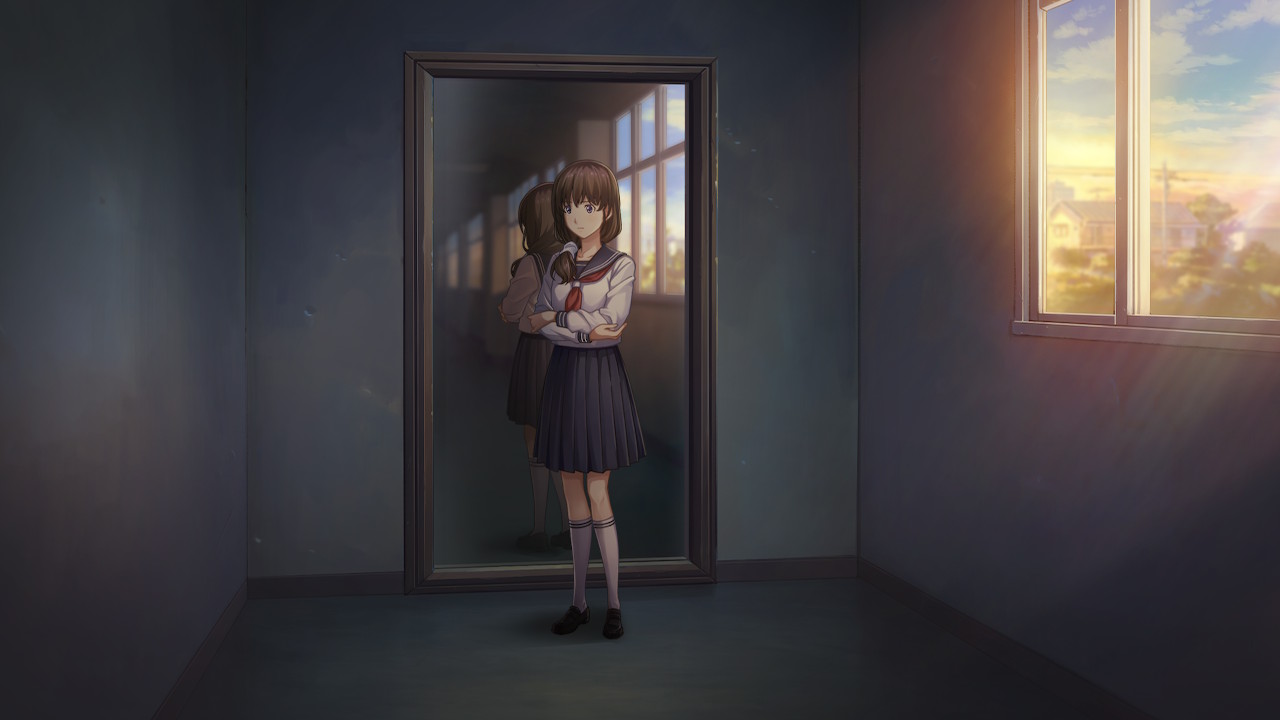
The Girl Who Stands In-front (Of The Mirror)
Another redone component of the games that helps sell the atmosphere is the recreated in-game music and sound effects. Players can choose either to play with the new ‘arranged’ version of the soundtrack which is beautifully composed or, for that extra layer of immersion, you can choose the original eight-bit soundtrack (I must say though, the original Super Famicom soundtrack for ‘The Girl Who Stands Behind’ is a must-listen *chefs kiss*). Something completely new to this remake is full voice acting for all characters. The VO work is only available in Japanese with English subtitles so if you desire you can choose to keep it a bit more traditional, with the option to turn off voice playback for the protagonist and/or interactable characters. In doing so you would be depriving yourself of some entertaining and engaging voice work from the likes of Megumi Ogata (JP voice of Shinji Ikari from Neon Genesis Evangelion) and Yūko Minaguchi (JP voice of Videl from the Dragon Ball Z/Super series).
One aspect of this pair of remakes that may make or break your decision to purchase is the seemingly inflated price tag of $90AUD. Between the two titles included, I clocked in at around about fourteen hours of gameplay by the time of completion. For readers who are a little more well-versed in the visual novel genre this may sound like a reasonable price, but it’s hard to shake off the feeling that maybe a little bit of the Nintendo vault tax got sprinkled onto this one.
Final Thoughts
To tie up this investigation (sorry, I mean review), at times Famicom Detective Club: The Missing Heir and The Girl Who Stands Behind’s thirty-plus-year-old gameplay mechanics don’t really feel like they hold up in the modern day, but that doesn’t take away from its intriguing characters and pair of thrilling stories that’ll truly keep you guessing as to who you think is lying to save their own skin and who really is just an innocent bystander.
Reviewed on Nintendo Switch // Review code supplied by publisher
Click here for more information on WellPlayed’s review policy and ethics

- MAGES
- Nintendo
- Nintendo Switch
- May 14, 2021



Zachary is a console gamer at heart, but is slowly coming over to the PC side. Rhythm games like Project Diva and Groove Coaster are his comfort food, but is happy to dive into any genre if it looks enticing enough. His favourite game of all time is Portal 2 despite his struggle with modern puzzle games. Twitter - @simply_daft PSN - SimplyDaft Twitch - Simply_Daft





